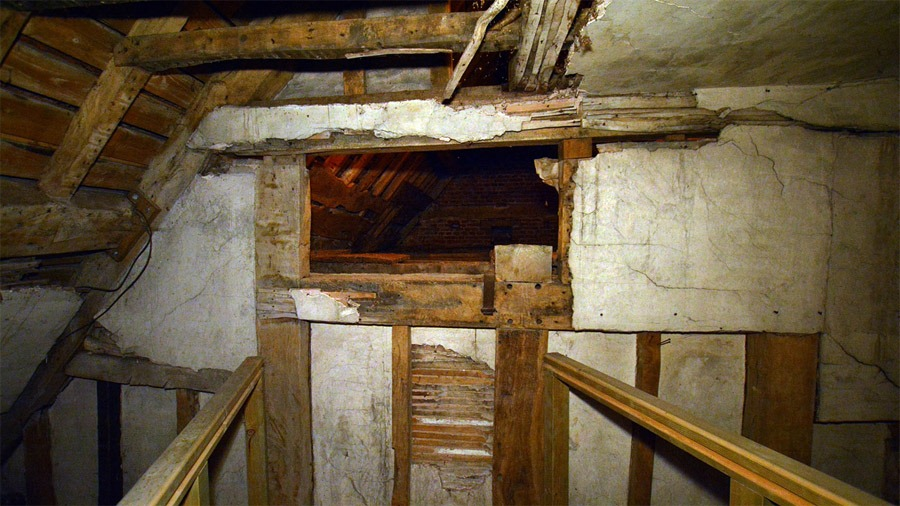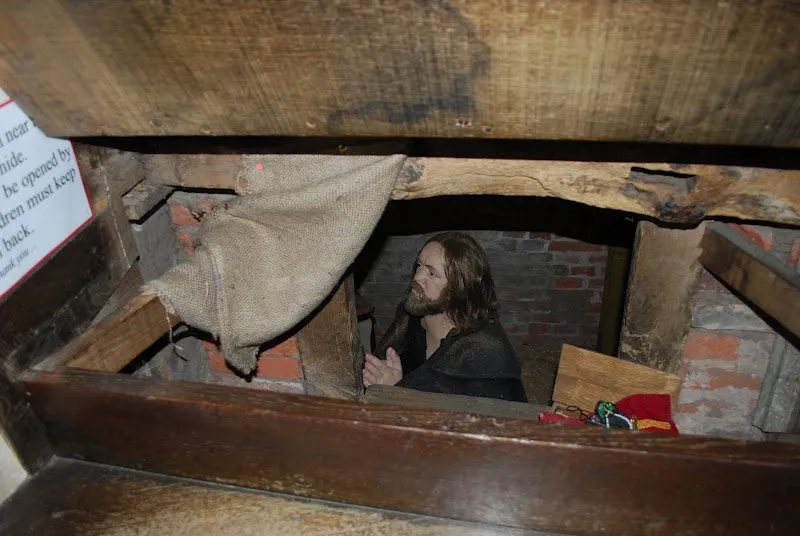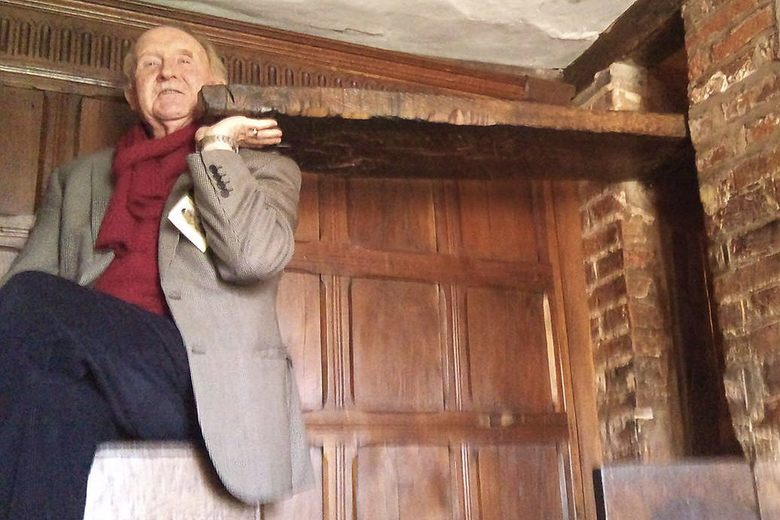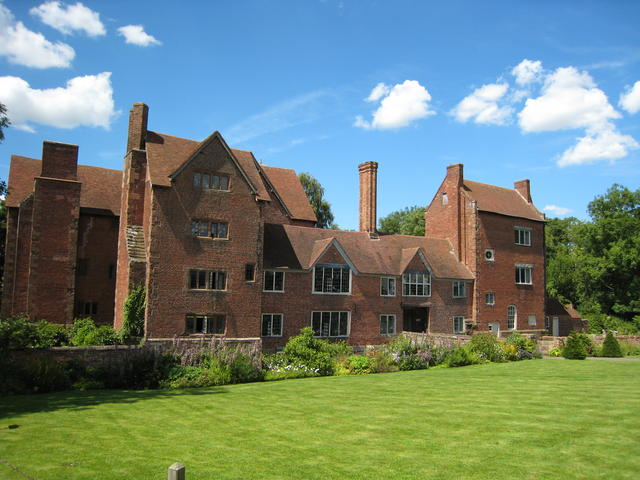In 16th-century England, religious belief wasn’t just personal it was political, dangerous, and sometimes fatal. After King Henry VIII broke from the Catholic Church and established the Church of England, the practice of Catholicism quickly became outlawed. Under Queen Elizabeth I, the crackdown grew even harsher. Attending Catholic Mass, sheltering a priest, or simply possessing a rosary could mark you as a traitor to the crown.
But England’s Catholic minority didn’t give up their faith. Instead, they found ways to worship in secret. That secrecy gave rise to one of the most remarkable architectural responses in history: the priest hole.

What Were Priest Holes?
A priest hole was a small, hidden chamber, cleverly built into the structure of a home. Typically located behind walls, under floorboards, inside staircases, or within chimneys, these spaces were designed to hide Catholic priests during raids by government officials.
When authorities suspected a household of harboring a priest, they would conduct thorough searches often tearing apart rooms, knocking on walls, and probing for hollow spaces. But many priest holes were so expertly concealed that they escaped discovery for centuries, even surviving into the modern era before being uncovered during renovations.

These hiding spots weren’t just quick fixes. They were architectural marvels of deception, built with incredible precision. They offered no windows, little air circulation, and barely enough space for a man to sit or lie down. Yet in moments of danger, these tight quarters became the difference between life and death.
Video:
Priest Holes – Avoiding Execution In Tudor England!
Nicholas Owen: The Unsung Hero of Hidden Architecture
At the heart of this covert movement was a carpenter named Nicholas Owen. A devout Catholic and member of the Jesuit order, Owen made it his life’s mission to design and build priest holes across England. Working in secrecy, often at night and alone, he risked everything to protect the lives of priests and the families who harbored them.
Owen’s craftsmanship was legendary. His priest holes were not only nearly impossible to detect, but he often constructed false hiding spots to trick searchers, diverting them away from the real sanctuaries. His work was so effective that many of his hiding places are still hidden to this day.
Video:
Harvington Hall – The most ingenious priest hide in England?
Tragically, Owen was captured in 1606. Despite being subjected to brutal torture in the Tower of London, he refused to reveal any secrets. He died under interrogation, becoming a martyr to his cause. In 1970, the Catholic Church officially recognized his heroism by canonizing him as Saint Nicholas Owen.
Life in Hiding: The Cost of Faith
The men who hid in these spaces often for hours or even days endured unimaginable hardship. Cramped in darkness, with no food or water and limited oxygen, they listened in silence as searchers tore through the home just outside their hidden walls.
Sometimes, their stay ended in safety. Other times, betrayal or faulty construction led to capture. The punishment for being a Catholic priest was often execution. Still, many were willing to take that risk, believing their work to be divine.
Families who built and maintained these priest holes were just as brave. They too faced imprisonment, loss of property, or death. Yet hundreds of households across England kept their faith alive by constructing these secret sanctuaries.

Where You Can See Them Today
Several well-preserved priest holes remain and are open to visitors. Places like Harvington Hall in Worcestershire, Baddesley Clinton in Warwickshire, and Oxburgh Hall in Norfolk provide powerful glimpses into this hidden world. Walking through these historic homes, you can see firsthand the incredible lengths people went to in order to protect their beliefs.
In some cases, the hiding spots are shockingly small barely enough space to crouch. In others, they are so seamlessly integrated into the structure that you would never guess they were there unless someone pointed them out.

Legacy of Courage and Conviction
Today, the story of priest holes serves as a chilling reminder of a time when religious freedom was suppressed by force. They are monuments not of stone and grandeur, but of quiet resistance. They show how ordinary people stood up against a powerful state not with violence, but with cunning, courage, and faith.
And thanks to the brilliant hands of Nicholas Owen and the bravery of those who protected these hidden sanctuaries, many priests survived long enough to continue their work, ensuring that Catholic traditions endured through one of the darkest periods of English history.


